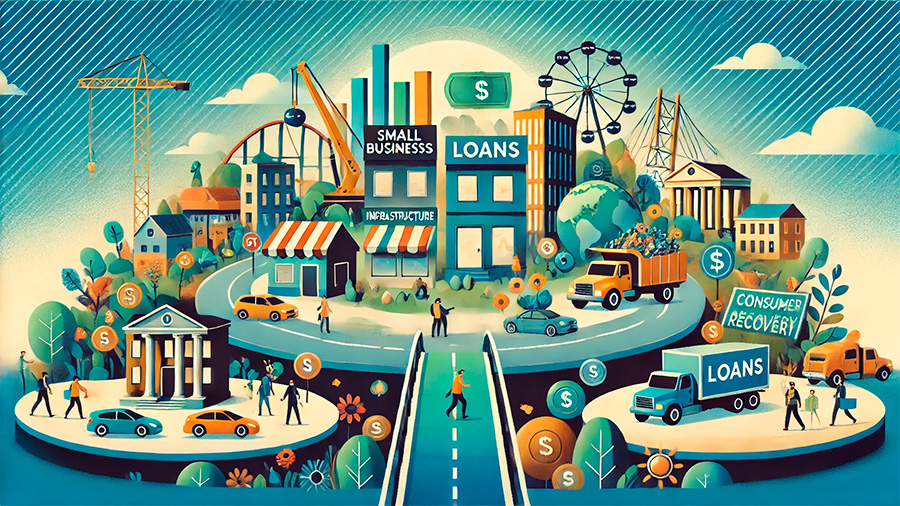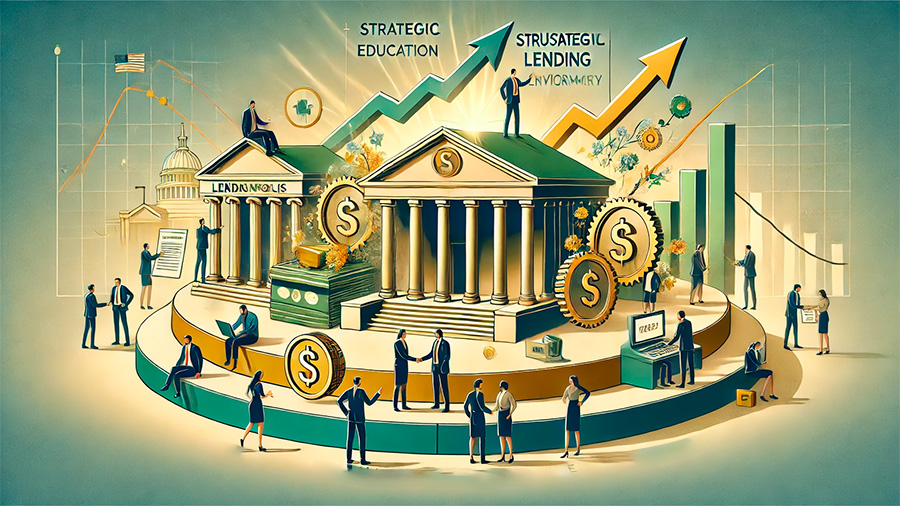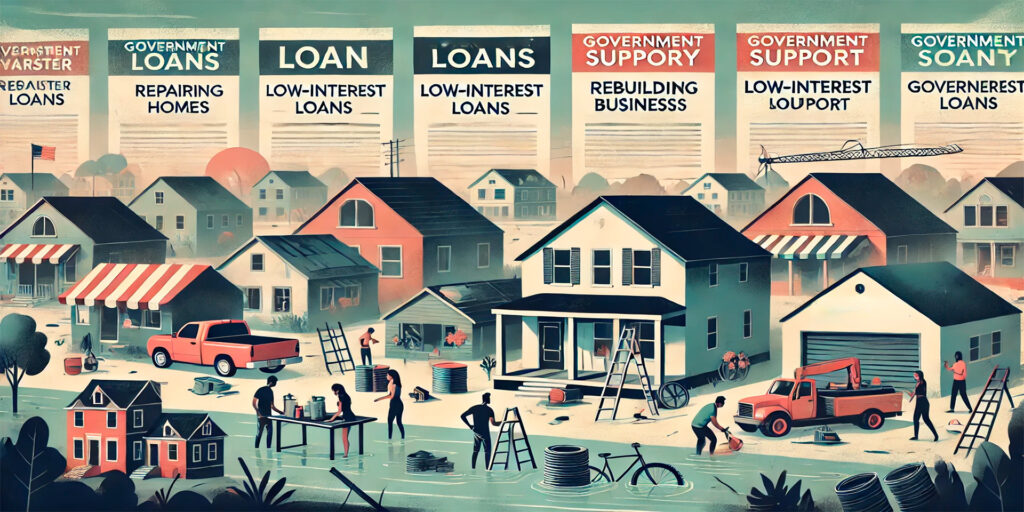Financing Economic Recovery: The Importance of Lending After a Crisis

In the wake of an economic crisis, lending plays a pivotal role in stimulating recovery by providing individuals, businesses, and governments with the capital needed to rebuild and reignite economic activity. Whether it’s a global financial downturn, a natural disaster, or a health crisis like the COVID-19 pandemic, access to credit and loans becomes a critical tool for reviving industries, supporting small businesses, and enabling governments to fund essential recovery efforts.
This article explores how lending can jumpstart economic recovery after a crisis, the types of loans available, and how strategic lending policies can pave the way for sustained growth.
How Lending Stimulates Economic Activity
Lending provides the liquidity necessary to restart stalled economies by ensuring that businesses, consumers, and governments have access to capital. Following an economic crisis, businesses may face depleted reserves, decreased revenue, and high operating costs, while individuals may struggle with unemployment and reduced income. Loans, whether from banks, governments, or other financial institutions, offer a lifeline that can stimulate spending, investment, and growth.
The primary role of lending in post-crisis recovery is to inject capital into the economy, enabling businesses to restart operations, rebuild infrastructure, and hire workers. Additionally, consumer loans can boost spending, which in turn supports demand for goods and services, leading to job creation and overall economic revitalization.
1. Restoring Business Operations
For businesses that have been heavily impacted by an economic downturn, access to loans is essential for restarting operations. Loans can help businesses cover operational expenses, rebuild inventory, and hire employees. Many small businesses, which are particularly vulnerable during a crisis, rely on loans to survive and recover. Without access to credit, these businesses may be forced to shut down permanently, leading to widespread job losses and further economic strain.
How lending helps businesses recover:
- Rebuilding inventory and supplies: Loans provide businesses with the capital needed to restock goods and supplies after disruptions in production or sales.
- Covering operating expenses: Loans allow businesses to cover essential costs such as rent, utilities, and wages until they are able to generate revenue again.
2. Boosting Consumer Spending
Consumer spending is a key driver of economic growth. During a crisis, consumer confidence often declines, leading to reduced spending on goods and services. Loans, such as personal loans or credit lines, can provide consumers with the funds they need to continue making purchases, which supports businesses and helps maintain demand. As spending increases, businesses are more likely to invest in expanding their operations, hiring workers, and increasing production.
How loans support consumer spending:
- Access to credit for essential purchases: Loans and credit allow individuals to make necessary purchases, such as housing, transportation, or education, even when cash flow is limited.
- Increased demand for goods and services: Consumer loans help maintain demand for goods and services, which drives business growth and job creation.

Types of Loans That Drive Economic Recovery
There are several types of loans that play a critical role in economic recovery post-crisis, each serving different sectors of the economy. From small business loans to government-backed financing, these lending programs provide essential funding for rebuilding industries, supporting consumers, and stabilizing financial markets.
1. Small Business Loans
Small businesses are often the hardest hit during a crisis, as they typically lack the financial reserves to weather extended periods of low revenue. Small business loans provide these companies with the capital needed to recover from economic disruptions, whether it’s to repair physical damage, restock inventory, or cover payroll. Many governments and financial institutions offer specialized small business loan programs during periods of economic recovery, often with favorable terms to encourage borrowing and investment.
Benefits of small business loans in recovery:
- Flexible terms: Small business loans often come with low-interest rates, deferred payment options, or other favorable terms that make them accessible to struggling businesses.
- Support for job creation: By providing businesses with the funds they need to hire workers and restart operations, small business loans contribute to job creation and economic growth.
2. Government-Backed Loans
During a crisis, governments play a key role in providing or guaranteeing loans to businesses and individuals. Government-backed loans are often used to stimulate economic activity by encouraging investment in infrastructure, housing, and other critical sectors. These loans may also come with lower interest rates, longer repayment terms, or more flexible requirements, making them more accessible to those affected by the crisis.
Examples of government-backed lending programs:
- SBA loans: In the United States, the Small Business Administration (SBA) offers disaster recovery loans to help businesses rebuild after natural disasters or economic downturns.
- FEMA disaster loans: In the event of a natural disaster, the Federal Emergency Management Agency (FEMA) provides loans to individuals and businesses to help cover recovery costs.
3. Consumer Loans
Consumer loans, such as personal loans, auto loans, or credit card lines of credit, play a critical role in maintaining spending during a recovery period. When individuals have access to credit, they are more likely to continue making purchases that support the economy, even in the face of financial uncertainty. Consumer loans can also provide a safety net for households struggling with unemployment or reduced income, allowing them to meet essential needs while waiting for the job market to recover.
How consumer loans drive economic activity:
- Supporting essential purchases: Consumer loans help individuals finance essential items such as housing, transportation, and education during periods of financial difficulty.
- Maintaining demand: By enabling consumers to continue spending, loans help maintain demand for goods and services, supporting businesses and job creation.

The Role of Lending Policies in Sustained Recovery
Strategic lending policies are essential for sustained economic recovery. Governments and financial institutions must work together to ensure that loans are accessible to those who need them most and that lending policies support long-term growth rather than short-term fixes. By creating favorable lending environments and providing financial education, policymakers can help ensure that loans are used effectively to fuel recovery and avoid the pitfalls of excessive debt.
1. Flexible Lending Terms and Conditions
During an economic recovery, it is important for lending institutions to offer flexible terms that accommodate the needs of borrowers. This can include lower interest rates, extended repayment periods, and deferred payment options, which make it easier for businesses and individuals to borrow responsibly without overextending themselves. Flexible lending terms encourage borrowing while minimizing the risk of default, helping borrowers rebuild their financial stability over time.
Benefits of flexible lending policies:
- Encouraging responsible borrowing: By offering favorable terms, lenders can encourage borrowers to take on loans they can realistically repay, reducing the risk of financial strain.
- Minimizing default risk: Flexible repayment options reduce the likelihood of default, which helps stabilize the economy and prevents further financial crises.
2. Supporting Financial Education and Literacy
To maximize the effectiveness of lending in economic recovery, financial education is essential. Borrowers must understand how to use loans responsibly and manage their debt to avoid future financial hardship. Governments and financial institutions can offer educational programs that teach individuals and businesses how to create budgets, manage debt, and plan for long-term financial success. By improving financial literacy, policymakers can ensure that lending programs are used to support sustainable growth.
Importance of financial education in recovery:
- Informed borrowing decisions: Financial literacy programs help individuals and businesses make informed decisions about borrowing, reducing the risk of overleveraging or defaulting on loans.
- Long-term financial stability: By teaching borrowers how to manage debt effectively, financial education promotes long-term financial stability and prevents future crises.
3. Encouraging Investment in Key Sectors
In many cases, lending policies can be used to encourage investment in key sectors of the economy, such as infrastructure, green energy, or technology. By offering favorable loan terms or government-backed financing for specific industries, policymakers can direct capital to areas that are critical for long-term economic growth. This not only helps stimulate recovery in the short term but also builds a stronger, more resilient economy for the future.
Targeted lending policies for economic growth:
- Infrastructure investment: Loans for infrastructure projects can create jobs, improve transportation, and enhance connectivity, laying the foundation for sustained economic growth.
- Green energy initiatives: Lending programs that support renewable energy projects can help transition economies toward more sustainable energy sources, creating long-term economic benefits.
Conclusion
Lending plays a critical role in driving economic recovery after a crisis. Whether it’s through small business loans, government-backed financing, or consumer credit, access to loans helps stimulate economic activity by providing the capital necessary for businesses to reopen, consumers to spend, and communities to rebuild. By adopting strategic lending policies that promote flexibility, financial education, and investment in key sectors, policymakers can pave the way for sustained growth and economic resilience post-crisis.


